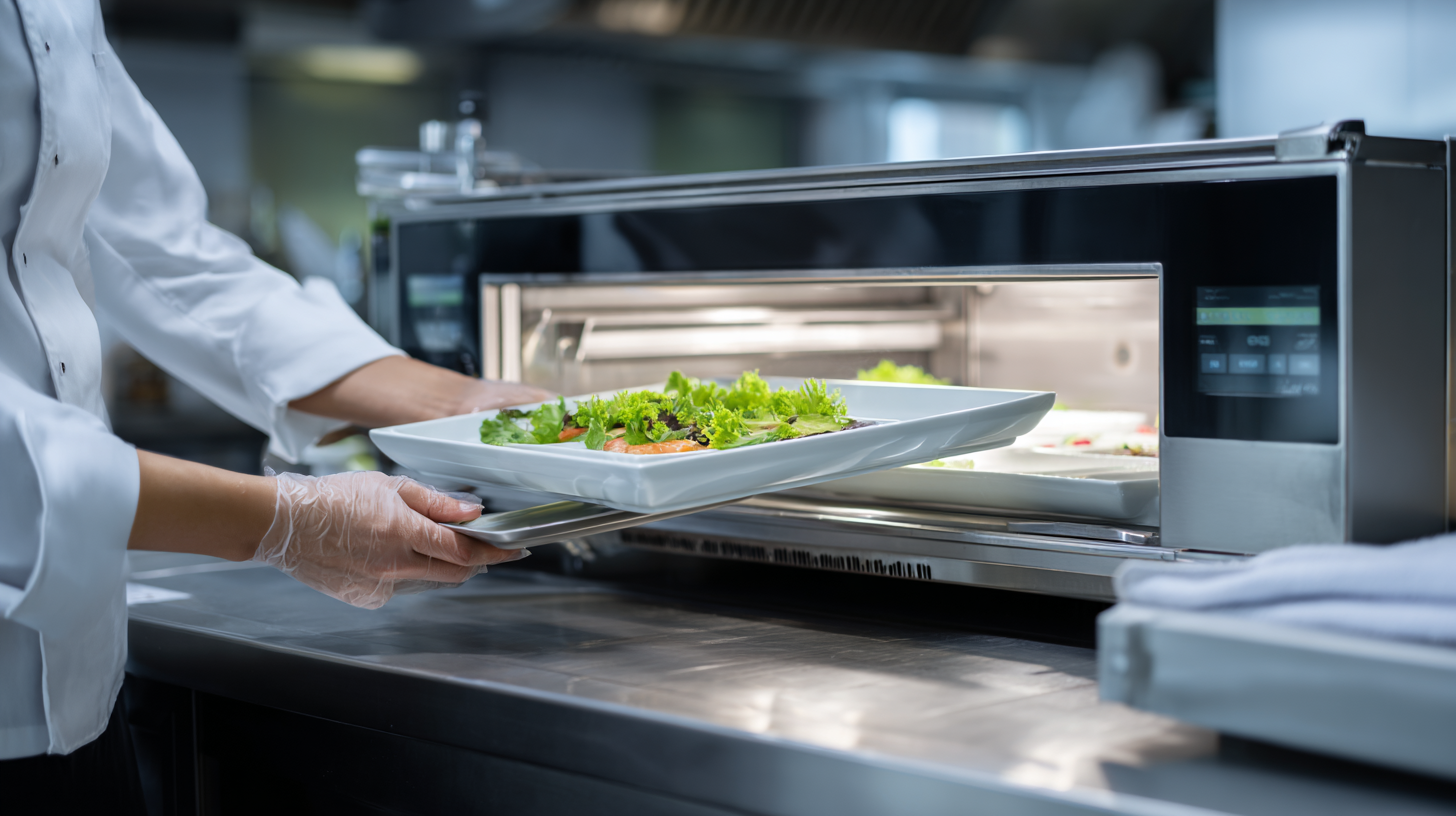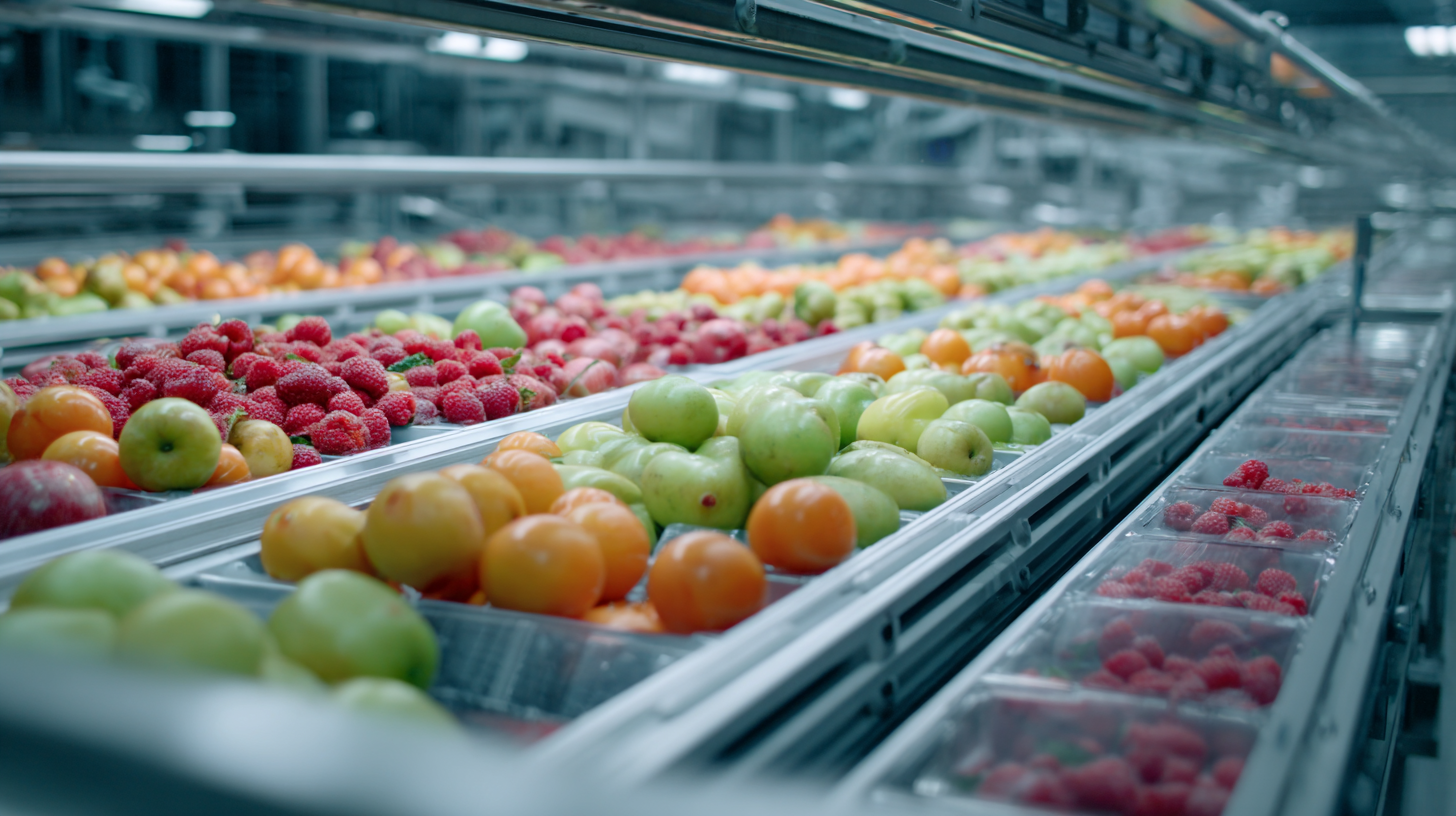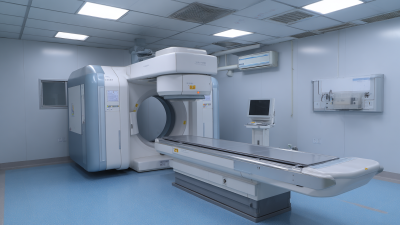BLOG
How to Use X-Ray Technology in the Food Industry for Enhanced Safety and Quality
In recent years, the food industry has increasingly turned to advanced technologies to ensure the safety and quality of food products. One such innovation is the application of X-Ray technology, widely regarded for its ability to detect contaminants, foreign objects, and inconsistencies in food items. According to a report by MarketsandMarkets, the X-Ray food inspection market is projected to grow from $218 million in 2020 to $320 million by 2025, reflecting a compound annual growth rate (CAGR) of 8.2%. This growth highlights the escalating demand for effective safety measures in food processing and packaging.

Dr. Jane Smith, a leading expert in food safety technologies, emphasizes the critical role of X-Ray methods in the industry, stating, "X-Ray for the food industry not only helps in identifying physical hazards but also enhances overall quality control processes." The integration of X-Ray inspection systems enables manufacturers to streamline operations while adhering to stringent safety standards imposed by regulatory bodies. As foodborne illnesses continue to pose significant health risks globally, implementing X-Ray technology represents a proactive approach in safeguarding consumer health and maintaining the integrity of food products. This article will explore practical strategies for utilizing X-Ray technology in the food industry to enhance safety and quality.
The Role of X-Ray Technology in Detecting Contaminants in Food Products
X-ray technology has emerged as a crucial tool in ensuring food safety and quality by effectively detecting contaminants in food products. This non-invasive technique allows manufacturers to identify foreign objects, such as metal, glass, and stones, that may inadvertently enter the food supply during processing. By using X-ray inspection systems, food producers can enhance the overall safety of their products, thus significantly reducing the risk of foodborne illnesses and consequent legal liabilities.
Beyond identifying physical contaminants, X-ray technology can also be utilized to assess the integrity of packaging and detect anomalies within the product itself. This includes evaluating the consistency of food items, identifying underfilled packages, and ensuring that seals are intact. By integrating X-ray inspection into their quality control processes, food industry stakeholders can maintain higher standards of safety and quality, ultimately leading to increased consumer trust and satisfaction.
Enhancing Quality Control with X-Ray Imaging in Food Manufacturing
 X-ray technology has become a game changer in the food manufacturing sector, particularly in enhancing quality control processes. According to a report by MarketsandMarkets, the X-ray food inspection market is projected to reach USD 276 million by 2025, reflecting a growing recognition of the importance of advanced inspection techniques. This technology not only ensures compliance with safety standards but also significantly improves product quality by detecting foreign objects, verifying filling levels, and assessing the integrity of packaging.
X-ray technology has become a game changer in the food manufacturing sector, particularly in enhancing quality control processes. According to a report by MarketsandMarkets, the X-ray food inspection market is projected to reach USD 276 million by 2025, reflecting a growing recognition of the importance of advanced inspection techniques. This technology not only ensures compliance with safety standards but also significantly improves product quality by detecting foreign objects, verifying filling levels, and assessing the integrity of packaging.
Incorporating X-ray imaging into food manufacturing processes helps companies maintain higher standards of hygiene and safety. A study from the International Journal of Food Science highlights that X-ray systems can detect contaminants as small as 0.4 mm, which traditional methods might overlook. Enhanced detection capabilities lead to lower product recalls and improved consumer trust. Furthermore, these systems provide instantaneous feedback, allowing manufacturers to make real-time adjustments, thereby optimizing production efficiency and reducing waste. By leveraging X-ray technology, food manufacturers can significantly elevate their quality control measures, contributing to safer and higher-quality food products for consumers.
X-Ray Techniques for Identifying Foreign Objects in Packaged Foods
X-ray technology is revolutionizing the food industry by enhancing safety and quality through the identification of foreign objects in packaged foods. According to a report from the International Journal of Food Science, the application of X-ray inspection systems has increased dramatically in recent years, with over 30% of food manufacturers now utilizing this technology to ensure product integrity. X-ray systems can detect contaminants such as metal, glass, and plastic that may accidentally enter the production line, thus significantly reducing the risk of food safety incidents.
Tip: When implementing X-ray inspection in your facility, it's essential to conduct regular equipment calibration and maintenance to ensure optimal detection efficiency. This will help in identifying even the smallest foreign objects, providing an added layer of protection for consumers.
By incorporating X-ray technology, companies not only enhance the safety of their products but also improve overall quality control processes. Data shows that companies using X-ray inspection can reduce product recalls attributed to foreign object contamination by up to 50%, demonstrating a clear alignment with consumer safety expectations.
Tip: Train staff on the importance of foreign object detection, as a knowledgeable team can better respond to potential issues and maintain high inspection standards, ultimately fostering a culture of safety within the organization.

Utilizing X-Ray Technology for Compliance with Food Safety Regulations
X-ray technology has become an essential tool in the food industry, especially regarding compliance with stringent food safety regulations. Research by the Food Safety and Inspection Service (FSIS) indicates that X-ray inspection can detect contaminants such as metal, glass, and other foreign objects, ensuring that food products meet safety standards. As the FDA enforces more rigorous regulations, adopting advanced detection technologies has become crucial for manufacturers. Leveraging X-ray systems helps companies comply with laws while boosting consumer trust by providing safer food products.
When implementing X-ray technology, it is essential to consider its impact on operational efficiency and safety compliance. One effective tip is to train staff on the importance of regular maintenance and calibration of X-ray machines to ensure optimal performance. Regularly scheduled training can help staff recognize the critical role X-ray inspection plays in mitigating risks associated with foodborne illnesses. Additionally, integrating X-ray inspections into the production line can enhance throughput and minimize unnecessary downtime, helping businesses stay compliant and productive.
Moreover, keeping detailed records of inspections can provide invaluable data for audits and certifications required by regulatory bodies. Businesses should establish a standardized reporting process for X-ray findings to streamline compliance efforts. This proactive approach not only aids in maintaining safety standards but also equips food manufacturers with the necessary documentation to demonstrate adherence to food safety regulations during inspections. By utilizing X-ray technology judiciously, food companies can significantly enhance both the safety and quality of their products.
How to Use X-Ray Technology in the Food Industry for Enhanced Safety and Quality
| Dimension | Description | Benefit | Compliance Aspect |
|---|---|---|---|
| Foreign Object Detection | Identifying unwanted objects in food products | Prevention of contamination risk | Meets FDA and EU safety regulations |
| Quality Assurance | Verifying product integrity and consistency | Ensures high-quality standards | Supports ISO 22000 compliance |
| Weight Verification | Checking product weight without damaging packaging | Accurate serving sizes for consumers | Aligns with trade standards for packaging |
| Reduction of Food Waste | Identifying defects in food products prior to packaging | Maximizes efficiency and reduces losses | Helps in meeting sustainability targets |
| Traceability | Ensuring complete traceability of food products | Enhances recall management process | Supports compliance with traceability regulations |
The Future of X-Ray Applications in Food Industry Innovations
The food industry is on the brink of revolutionizing safety and quality through the innovative application of X-ray technology. As companies increasingly embrace advanced X-ray systems, these technologies are expected to enhance food safety protocols, ensuring that contaminants are detected more efficiently. With the growing demand for food safety due to rising consumer awareness, the integration of X-ray tech not only streamlines inspection processes but also minimizes the risk of product recalls, thereby reinforcing brand trust and market competitiveness.
Looking toward the future, the potential applications of X-ray technology in the food sector are poised to expand significantly. As we approach 2030, the intersection of X-ray technology and innovations such as artificial intelligence may lead to sophisticated automated inspection systems. These advancements will facilitate real-time monitoring and analysis of food products, enabling producers to maintain stringent quality assurance while reducing waste. The food industry's embrace of these disruptive technologies reflects a broader trend toward enhanced productivity and sustainability, ultimately shaping a safer and more quality-conscious environment for consumers.
Food Industry X-Ray Technology Adoption Rates (2020-2023)
This bar chart illustrates the adoption rates of X-Ray technology in the food industry from 2020 to 2023, showing a significant increase as the industry recognizes the technology's benefits for enhancing safety and quality.

